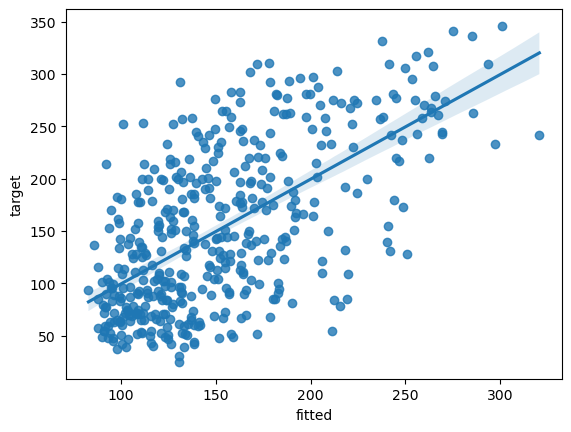4. Activation Functions#
So far, we have looked at examples where the output is a weighted sum of the inputs. Generally, you’d use classical regression software in that case rather than torch, since the classical software provies greater speed and interpretability for linear regression. The benefit of deep learning is the ability to estimate nonlinear functions, which are generally beyond the scope of linear regression.
Nonlinearity is introduced to deep learning by using activation functions, which are simple, nonlinear functions that introduce complexity into the model. In this chapter, we will look at three of the most common activation functions: rectified linear units (ReLU), Sigmoid, and tanh. Let’s use the ReLU activation function as a specific example to understand how they work in a deep learning model.
4.1. ReLU Activation Function#
Activation functions get their name from the Restricted Linear Unit (ReLU) activation function. It defines a threshold for its input and sets the output to zero if the input is below the threshold. Otherwise, the input is the same as the output. So, you could say that the output is active above the threshold and inactive below the threshold. Here is what the ReLU function looks like as it maps its input to its output:

The power of the ReLU activation function is that it introduces conditional statements like “if… then…” into the model. This allows the model to have different behavior depending on its inputs, rather than always giving the same weight to the same column of inputs. In order to make use of the complex conditionality, ReLU activation functions are typically put between linear layers. Here is an example that makes the linear regression model for diabetes progression into a nonlinear dep learning model:
# define the torch model
class NonlinearRegressionModel(torch.nn.Module):
def __init__(self, input_dim, hidden_dim, output_dim=1):
super(NonlinearRegressionModel, self).__init__()
self.linear_1 = torch.nn.Linear(input_dim, hidden_dim)
self.linear_2 = torch.nn.Linear(hidden_dim, output_dim)
self.relu = torch.nn.ReLU(hidden_dim)
def forward(self, x):
result = self.linear_1(x)
result = self.relu(result)
result = self.linear_2(result)
return result
Note that the model now has multipl linear layers with that operate on different dimensions and with a ReLU layer between them. We can now create an instance of the nonlinear model and train it:
# instantiate the model
my_nonlin = NonlinearRegressionModel(input_dim=2, hidden_dim=5)
# define the loss function and the optimizer
criterion = torch.nn.MSELoss()
optimizer = torch.optim.Adam(my_nonlin.parameters(), lr=1)
# convert the data to tensors
x_data = torch.tensor(df[['bmi', 's6']].values, dtype=torch.float32)
y_data = torch.tensor(df['target'].values, dtype=torch.float32).unsqueeze(-1)
# train the model by repeatedly making small steps toward the solution
for epoch in range(40000):
# Forward pass
y_pred = my_nonlin(x_data)
# Compute and print loss
loss = criterion(y_pred, y_data)
if epoch % 1000 == 0:
print(f'Epoch: {epoch} | Loss: {loss.item()}')
# Zero gradients, perform a backward pass, and update the parameters.
optimizer.zero_grad()
loss.backward()
optimizer.step()
Epoch: 0 | Loss: 29134.857421875
Epoch: 1000 | Loss: 3723.62890625
Epoch: 2000 | Loss: 3723.62890625
Epoch: 3000 | Loss: 3723.62890625
Epoch: 4000 | Loss: 3723.62841796875
Epoch: 5000 | Loss: 3723.62890625
Epoch: 6000 | Loss: 3723.628662109375
Epoch: 7000 | Loss: 3723.62890625
Epoch: 8000 | Loss: 3629.808349609375
Epoch: 9000 | Loss: 3631.943115234375
Epoch: 10000 | Loss: 3630.031982421875
Epoch: 11000 | Loss: 3629.775634765625
Epoch: 12000 | Loss: 3625.42822265625
Epoch: 13000 | Loss: 3625.53466796875
Epoch: 14000 | Loss: 3623.890625
Epoch: 15000 | Loss: 3624.219970703125
Epoch: 16000 | Loss: 3623.57568359375
Epoch: 17000 | Loss: 3625.212158203125
Epoch: 18000 | Loss: 3623.34521484375
Epoch: 19000 | Loss: 3623.49951171875
Epoch: 20000 | Loss: 3623.993896484375
Epoch: 21000 | Loss: 3623.3232421875
Epoch: 22000 | Loss: 3625.195068359375
Epoch: 23000 | Loss: 3622.60888671875
Epoch: 24000 | Loss: 3620.525390625
Epoch: 25000 | Loss: 3620.5341796875
Epoch: 26000 | Loss: 3620.423828125
Epoch: 27000 | Loss: 3620.857666015625
Epoch: 28000 | Loss: 3620.439697265625
Epoch: 29000 | Loss: 3622.558349609375
Epoch: 30000 | Loss: 3620.7119140625
Epoch: 31000 | Loss: 3620.645751953125
Epoch: 32000 | Loss: 3620.683349609375
Epoch: 33000 | Loss: 3620.650146484375
Epoch: 34000 | Loss: 3621.42822265625
Epoch: 35000 | Loss: 3620.89599609375
Epoch: 36000 | Loss: 3620.390380859375
Epoch: 37000 | Loss: 3621.003662109375
Epoch: 38000 | Loss: 3621.7138671875
Epoch: 39000 | Loss: 3620.70703125
The training loss seems stable after about 30000 iterations.
# print out the model parameters:
for param in my_nonlin.parameters():
print(param)
Parameter containing:
tensor([[ -0.2555, -0.5684],
[ 80.6649, 32.7858],
[ -5.8280, -6.3134],
[ 30.3064, -49.6007],
[ 55.9338, 107.0210]], requires_grad=True)
Parameter containing:
tensor([-0.4508, 6.2032, -5.5858, 4.6875, 0.1389], requires_grad=True)
Parameter containing:
tensor([[-0.1531, 7.7079, 5.5726, 3.4063, 3.9982]], requires_grad=True)
Parameter containing:
tensor([76.4415], requires_grad=True)
fit_nonlin = pd.DataFrame({'fitted':y_pred.squeeze(1).detach().numpy()})
fit_nonlin['target'] = df['target']
# plot model fits
fit_plot = sns.regplot(data=fit_nonlin, x="fitted", y="target")

